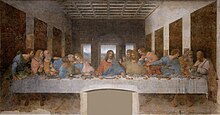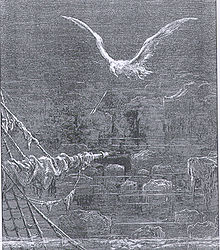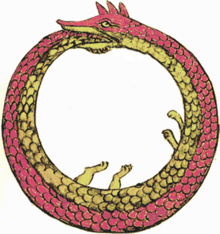Kenneth Clark


Kenneth McKenzie Clark, Baron Clark of Saltwood, OM, CH, KCB, FBA (13 July 1903 – 21 May 1983) was an English art historian and director of London's National Gallery (1934–1945) who is remembered for his television series Civilisation first broadcast in 1969.
Quotes
[edit]




















- In time of war all countries behave equally badly, because the power of action is handed over to stupid and obstinate men.
Leonardo da Vinci (1939)
[edit]- Those who wish, in the interest of morality, to reduce Leonardo, that inexhaustible source of creative power, to a neutral or sexless agency, have a strange idea of doing service to his reputation.
- Ch. Two: 1481-1490
- Gargoyles were the complement to saints; Leonardo's caricatures were complementary to his untiring search for ideal beauty. And gargoyles were the expression of all the passions, the animal forces, the Caliban gruntings and groanings which are left in human nature when the divine has been poured away. Leonardo was less concerned than his Gothic predecessors with the ethereal parts of our nature, and so his caricatures, in their expression of passionate energy, merge imperceptibly into the heroic.
- Ch. Three: The Notebooks
- Evidently one cannot look for long at the Last Supper without ceasing to study it as a composition, and beginning to speak of it as a drama. It is the most literary of all great pictures, one of the few of which the effect may largely be conveyed — can even be enhanced — by description.
- Ch. Five: 1485-1496
- To Leonardo a landscape, like a human being, was part of a vast machine, to be understood part by part and, if possible, in the whole. Rocks were not simply decorative silhouettes. They were part of the earth's bones, with an anatomy of their own, caused by some remote seismic upheaval. Clouds were not random curls of the brush, drawn by some celestial artist, but were the congregation of tiny drops formed from the evaporation of the sea, and soon would pour back their rain into the rivers.
- Ch. Six: 1497-1503
- Leonardo is the Hamlet of art history whom each of us must recreate for himself.
- Ch. Nine: 1513-1519
The Nude: A Study in Ideal Form (1951)
[edit]- It is widely supposed that the naked human body is in itself an object upon which the eye dwells with pleasure and which we are glad to see depicted. But anyone who has frequented art schools and seen the shapeless, pitiful model that the students are industriously drawing will know this is an illusion. The body is not one of those objects which can be made into art by direct transcription — like a tiger or a snowy landscape. Often in looking at the natural and animal world we joyfully identify ourselves with what we see and from this happy union create a work of art. This is the process students of aesthetics call empathy, and it is at the opposite pole of creative activity to the state of mind that has produced the nude. A mass of naked figures does not move us to empathy, but to disillusion and dismay.
- Ch. 1: The Naked and the Nude
- The various parts of the body cannot be perceived as simple units and have no clear relationship to one another. In almost every detail the body is not the shape that art has led us to believe it should be.
- Ch. 1: The Naked and the Nude
- No nude, however abstract, should fail to arouse in the spectator some vestige of erotic feeling, even if it be only the faintest shadow — and if it does not do so it is bad art and false morals.
- Ch. 1: The Naked and the Nude
- The nude gains its enduring value from the fact that it reconciles several contrary states. It takes the most sensual and immediately interesting object, the human body, and puts it out of reach of time and desire; it takes the most purely rational concept of which mankind is capable, mathematical order, and makes it a delight to the senses; and it takes the vague fears of the unknown and sweetens them by showing that the gods are like men and may be worshiped for their life-giving beauty rather than their death-dealing powers.
- Ch. I: The Naked and the Nude
- Energy is eternal delight; and from the earliest times human beings have tried to imprison it in some durable hieroglyphic. It is perhaps the first of all the subjects of art.
- Ch. V: Energy
- Early artists considered the human body, that forked radish, that defenseless starfish, a poor vehicle for the expression of energy, compared to the muscle-rippling bull and the streamlined antelope. Once more it was the Greeks, by their idealization of man, who turned the human body into an incarnation of energy, to us the most satisfying of all, for although it can never attain the uninhibited physical flow of the animal, its movements concern us more closely. Through art we can relive them in our own bodies, and achieve thereby that enhanced vitality which all thinkers on art, from Goethe to Berenson, have recognized as one of the chief sources of aesthetic pleasure.
- Ch. V: Energy
- It remains true that Michelangelo's intensely personal use of the nude greatly altered its character. He changed it from a means of embodying ideas to a means of expressing emotions; he transformed it from the world of living to the world of becoming. And he projected his world of the imagination with such unequaled artistic power that its shadow fell on every male nude in art for three hundred and fifty years. Painters either imitated his heroic poses and proportions or they reacted against them self-consciously and sought a new repertoire of attitudes in the art of fifth-century Greece. In the nineteenth century the ghost of Michelangelo was still posing the models in art schools.
- Ch. V: Energy
- Antique art has come down to us in a fragmentary condition, and we have virtuously adapted our taste to this necessity. Almost all our favorite specimens of Greek sculpture, from the sixth century onward, were originally parts of compositions, and if we were faced with the complete group in which the Charioteer of Delphi was once a subsidiary figure, we might well experience a moment of revulsion. We have come to think of the fragment as more vivid, more concentrated, and more authentic.
- Ch. VI: Pathos
- His long struggle with physical passion was almost over, and, as with many other great sensualists, its place had been taken by an obsession with death.
- Ch. VI: Pathos
- Referring to Michelangelo
- Conventional nudes based on classical originals could bear no burden of thought or inner life without losing their formal completeness.
- Ch. VIII: The Alternative Convention
- Two pictures painted in the year 1907 can conveniently be taken as the starting point of twentieth-century art. They are Matisse's Blue Nude and Picasso's Demoiselles d'Avignon; and both these cardinal, revolutionary pictures represent the nude. The reason is that the revolt of twentieth-century painters was not against academicism: that had been achieved by the impressionists. It was a revolt against the doctrine, with which the impressionists implicitly agreed, that the painter should be no more than a sensitive and well-informed camera. And the very elements of symbolism and abstraction that made the nude an unsuitable subject for the impressionists commended it to their successors. When art was once more concerned with concepts rather than sensations, the nude was the first concept that came to mind.
- Ch. IX: The Nude As an End in Itself
- The eye instinctively looks for analogies and amplifies them, so that a face imagined in the pattern of a wallpaper may become more vivid than a photograph.
- Ch. IX: The Nude As an End in Itself
- Ruskin's much-derided moral theory of art was part of an attempt to show that this human activity, which we value so highly, engaged the whole of human personality. His insistence on the sanctity of nature was part of an attempt to develop Goethe's intuition that form cannot be put together in the mind by an additive process, but is to be deduced from the laws of growth in living organisms, and their resistance to the elements.
- Section 3: A Note on Ruskin's Writings on Art and Architecture
- Changes in the structure of society are not brought about solely by massive engines of doctrine. The first flash of insight which persuades human beings to change their basic assumptions is usually contained in a few phrases.
- Section 5: A Note on Ruskin's Writings on Society and Economics
Civilisation (1969)
[edit]- Based on the scripts of the TV documentary series, the quotes are taken from the book of the series.
- Great works of art can be produced in barbarous societies — in fact the very narrowness of primitive society gives their ornamental art a peculiar concentration and vitality. At some time in the ninth century one could have looked down the Seine and seen the prow of a Viking ship coming up the river. Looked at today in the British Museum, it is a powerful work of art; but to the mother of a family trying to settle down in her little hut, it would have seemed less agreeable — as menacing to her civilisation as the periscope of a nuclear submarine.
- Ch. 1: The Skin of Our Teeth
- People sometimes tell me that they prefer barbarism to civilisation. I doubt if they have given it a long enough trial. Like the people of Alexandria, they are bored by civilisation; but all the evidence suggests that the boredom of barbarism is infinitely greater.
- Ch. 1: The Skin of Our Teeth
- Seen by itself the David's body might be some unusually taut and vivid work of antiquity; it is only when we come to the head that we are aware of a spiritual force that the ancient world never knew. I suppose that this quality, which I may call heroic, is not a part of most people's idea of civilisation. It involves a contempt for convenience and a sacrifice of all those pleasures that contribute to what we call civilised life. It is the enemy of happiness. And yet we recognise that to despise material obstacles, and even to defy the blind forces of fate, is man's supreme achievement; and since, in the end, civilisation depends on man's extending his powers of mind and spirit to the utmost, we must reckon the emergence of Michelangelo as one of the great events in the history of western man.
- Ch. 5: The Hero as Artist
- Heroes do not easily tolerate the company of other heroes.
- Ch. 5: The Hero as Artist
- The great artist takes what he needs.
- Ch. 5: The Hero as Artist
- The convention by which the great events in biblical or secular history could be enacted only by magnificent physical specimens, handsome and well-groomed, went on for a long time — till the middle of the nineteenth century. Only a very few artists — perhaps only Rembrandt and Caravaggio in the first rank — were independent enough to stand against it. And I think that this convention, which was an element in the so-called grand manner, became a deadening influence on the European mind. It deadened our sense of truth, even our sense of moral responsibility.
- Ch. 5: The Hero as Artist
- I wonder if a single thought that has helped forward the human spirit has ever been conceived or written down in an enormous room.
- Ch. 7: Grandeur and Obedience
- As for the Messiah, it is, like Michelangelo's Creation of Adam, one of those rare works that appeal immediately to everyone, and yet is indisputably a masterpiece of the highest order.
- Ch. 9: The Pursuit of Happiness
- Opera, next to Gothic architecture, is one of the strangest inventions of western man. It could not have been foreseen by any logical process.
- Ch. 9: The Pursuit of Happiness
- What on earth has given opera its prestige in western civilisation — a prestige that has outlasted so many different fashions and ways of thought? Why are people prepared to sit silently for three hours listening to a performance of which they do not understand a word and of which they very seldom know the plot? Why do quite small towns all over Germany and Italy still devote a large portion of their budgets to this irrational entertainment? Partly, of course, because it is a display of skill, like a football match. But chiefly, I think, because it is irrational. "What is too silly to be said may be sung" — well, yes; but what is too subtle to be said, or too deeply felt, or too revealing or too mysterious — these things can also be sung and can only be sung.
- Ch. 9: The Pursuit of Happiness; "What is too silly to be said may be sung" is a commonly used translation or paraphrase of lines from Act I, Scene ii of the play The Barber of Seville by Pierre de Beaumarchais, which was the basis of famous operas.
- We are so much accustomed to the humanitarian outlook that we forget how little it counted in earlier ages of civilisation. Ask any decent person in England or America what he thinks matters most in human conduct: five to one his answer will be "kindness." It's not a word that would have crossed the lips of any of the earlier heroes of this series. If you had asked St. Francis what mattered in life, he would, we know, have answered "chastity, obedience and poverty"; if you had asked Dante or Michelangelo, they might have answered "disdain of baseness and injustice"; if you had asked Goethe, he would have said "to live in the whole and the beautiful." But kindness, never. Our ancestors didn't use the word, and they did not greatly value the quality — except perhaps insofar as they valued compassion.
- Ch. 13: Heroic Materialism
- We have no idea where we are going, and sweeping, confident articles on the future seem to me, intellectually, the most disreputable of all forms of public utterance. The scientists who are best qualified to talk have kept their mouths shut.
- Ch. 13: Heroic Materialism
- Our universe cannot even be stated symbolically. And this touches us all more directly than one might suppose. For example, artists, who have been very little influenced by social systems, have always responded instinctively to latent assumptions about the shape of the universe. The incomprehensibility of our new cosmos seems to me, ultimately, to be the reason for the chaos of modern art.
- Ch. 13: Heroic Materialism
- One musn't overrate the culture of what used to be called "top people" before the wars. They had charming manners, but they were as ignorant as swans.
- Ch. 13: Heroic Materialism
Bright-minded young people think poorly of existing institutions and want to abolish them. Well, one doesn't need to be young to dislike institutions. But the dreary fact remains that, even in the darkest ages, it was institutions that made society work, and if civilisation is to survive society must somehow be made to work.
At this point I reveal myself in my true colours, as a stick-in-the-mud. I hold a number of beliefs that have been repudiated by the liveliest intellects of our time. I believe that order is better than chaos, creation better than destruction. I prefer gentleness to violence, forgiveness to vendetta. I believe that in spite of the recent triumphs of science, men haven't changed much in the last two thousand years; and in consequence we must still try to learn from history. History is ourselves.
- Ch. 13: Heroic Materialism
- It is lack of confidence, more than anything else, that kills a civilisation. We can destroy ourselves by cynicism and disillusion, just as effectively as by bombs.
- Ch. 13: Heroic Materialism
The Romantic Rebellion (1973)
[edit]- Totalitarian art must be a form of classicism: the state which is founded on order and subordination demands an art with a similar basis. Romantic painting, however popular, expresses the revolt of the individual. The State also requires an art of reason by which appropriate works may be produced as required. Inspiration is outside state control. The classic attitude toward subject matter — that it should be clear and unequivocal — supports the attitude of unquestioning belief. Add the fact that totalitarian art must be real enough to please the ignorant, ideal enough to commemorate a national hero, and well enough designed to present a memorable image, and one sees how perfectly The Death of Marat fills the bill. That it happens also to be a great work of art makes it dangerously misleading.
- Ch. 1: David
- However much the various phases of the French Revolution may have modelled themselves on Roman history — the early phase on Republican virtue, the later on Imperial grandeur — the fact remains that classicism depended on a fixed and rational philosophy; whereas the spirit of the Revolution was one of change and of emotion.
- Ch. 1: David
- There is no doubt that Goya thought that one of the drugs chiefly responsible for the sleep of reason was the Church, and he had the lowest possible opinion of ecclesiastical institutions. However, this did not prevent him from painting religious pictures, completely sincerely because, like all Latin people, however little he believed in Christianity, he felt himself to be within the structure of the Catholic Church. One of his finest works was the decoration of a church near Madrid called S. Antonio de la Florida. He used the kind of device that would have appealed to Tiepolo. He painted a balcony round the drum of a cupola, and behind it he put a crowd of loiterers who are supposed to be watching the saint raise a man from the dead. Very few of them are interested in this unusual event. They are interested in each other or themselves, and show very well the curious tension between the individual and the collective, which is the essence of a crowd.
- Ch. 3: Goya
- Ingres was one of those artists to whom the outline was something sacred and magical, and the reason is that it was the means of reconciling the major conflict in his art, the conflict between abstraction and sensibility. The difference between what we see and a sheet of white paper with a few thin lines on it is very great. Yet this abstraction is one which we seem to have adopted almost instinctively at an early stage in our development not only in Neolithic graffiti but in early Egyptian drawings. And in spite of its abstract character, the outline is responsive to the least tremor of sensibility.
- Ch. 4: Ingres I: The Years of Inspiration
- For the student of visionary art the interesting fact is that an image comes first and takes up residence in the mind long before the artist has any notion why it is there or what it means. Whether visions come from some great reservoir of symbolic images which are eternally there (and if one examines the recurrence of images in history this proposition is not quite as crazy as it sounds) or whether they are due to buried memories, their obsessive power over an artist's mind, and their clear, compulsive emergence in his work depends on a mental condition that can come and go. When, for some reason, they no longer present themselves to the mind's eye, alive or clamoring to be born, the visionary artist has a hard time — dark days. This is particularly true if he has lost the habit of feeding his mind on the observation of nature.
- Ch. 6: Blake
- This became Delacroix's theme: that the achievements of the spirit — all that a great library contained — were the result of a state of society so delicately balanced that at the least touch they would be crushed beneath an avalanche of pent-up animal forces.
- Ch. 8: Delacroix
- Fine colour implies a unified relationship, in which each part is subordinate to the whole, and the transitions between them are felt to be as precious and beautiful as the colours themselves. In fact, the colours themselves must be continuously modified and broken as part of the transition. Ruskin said in his Elements of Drawing, "Give me some mud off a city crossing, some ochre out of a gravel-pit, a little whitening, and some coal dust, and I will paint you a luminous picture, if you give me time to gradate my mud, and subdue my dust." In many works by the greatest colourists — Rembrandt and Watteau are examples — there are very few identifiable colours.
- Ch. 10: Turner II: The Liberation of Colour
- Millet was one of those artists on whom a few formal ideas make so deep an impression that they feel compelled to spend the whole of their lives in trying to lever them out. Perhaps this is the chief distinguishing mark of the classical artist; certainly it is what distinguishes his use of subject matter from that of the illustrator. The illustrator is essentially a reporter, his subjects come from the outside, lit by a flash. A subject comes to the classical artist from inside, and when he discovers confirmation of it in the outside world he feels that it has been there all the time. He must give to his subjects an air of complete inevitability, and this becomes a problem of formal completeness. That is why the classic artists, Degas no less than Poussin, return to the same motives again and again, hoping each time to mould the subject closer to the idea.
- Ch. 12: Millet
- Only the bad artists of the nineteenth century were frightened by the invention of photography; the good ones all welcomed it and used it. Degas liked it not only because it provided an accurate record, but because the snapshot showed him a means of escape from the classical rules of design. Through it he learnt to make a composition without the use of formal symmetry.
- Ch. 13: Degas
- To anyone who is not an artist it must seem rather strange that Degas who could do anything — for whom setting down what he saw presented no difficulties at all — should have continued to draw the same poses year after year — often, it would seem, with increasing difficulty. Just as a classical dancer repeats the same movements again and again, in order to achieve a greater perfection of line and balance, so Degas repeats the same motifs, it was one of the things that gave him so much sympathy with dancers. He was continually struggling to achieve an idea of perfect form, but this did not prevent him looking for the truth in what might seem an artificial situation.
- Ch. 13: Degas
- Almost all great painters in old age arrive at the same kind of broad, simplified style, as if they wanted to summarise the whole of their experience in a few strokes and blobs of colour.
- Ch. 13: Degas

